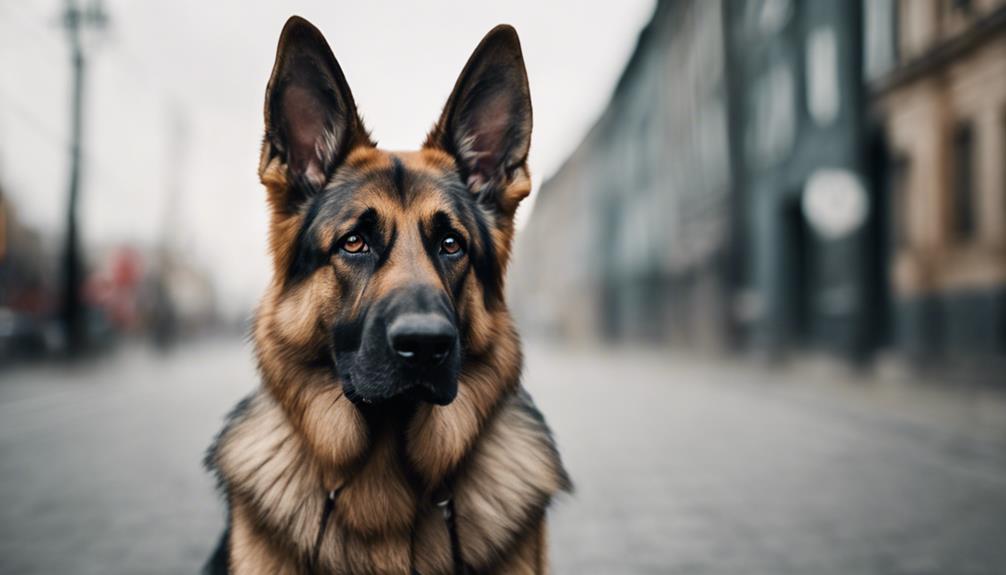🐾 Paw-some Partnership Alert! 🐾
As a pack of German Shepherd enthusiasts at MixGermanShepherd.com, we're always sniffing out the best products for our furry friends. Guess what? When you fetch something from Amazon through our links, we earn a little treat! 🦴
If you're looking to uncover the distinctive traits of Czech German Shepherds, you've come to the right place. These canines hold a blend of history and purpose that sets them apart from their counterparts. From their unique lineage to specialized training techniques, delving into the world of Czech German Shepherds will reveal a wealth of knowledge that can benefit any dog enthusiast.
Key Takeaways
- Developed in Czechoslovakia for border control duties
- Primarily bred from East German bloodlines
- Known for loyalty, intelligence, and protective nature
- Require proper training, exercise, and socialization
Breed History and Origins
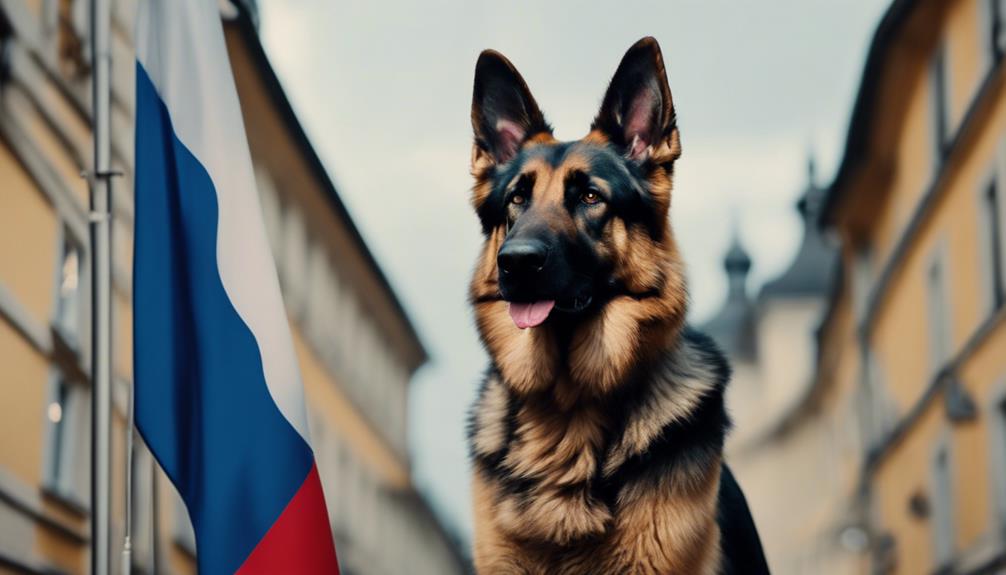
Originating around 1899 in communist Czechoslovakia, Czech German Shepherds were officially employed by the Czech Army's border control agency and have since played a significant role in various government operations. This Czech working line breed has a rich history that dates back to the late 19th century when the breed was first developed to assist the Czech Army in their border control duties. The breeding program for these dogs started gaining professional structure in 1955 under Czech Army supervision, ensuring that the dogs maintained their high working abilities and genetic standards.
The Czech German Shepherds were primarily bred from East German bloodlines, known for their exceptional working capabilities. This selective breeding process aimed to produce dogs with intelligence, loyalty, and agility, making them ideal for tasks such as tracking, search and rescue operations, and various law enforcement duties. The Czech Army's involvement in the breeding program played a crucial role in shaping the characteristics of these dogs, ensuring they were well-suited for the demanding tasks required of them.
Over time, Czech German Shepherds proved their worth not only in Czechoslovakia but also in German government operations. Their reputation for reliability, trainability, and versatility led to their widespread use in a variety of roles within government agencies, solidifying their status as a valuable asset in the working dog community.
Physical Characteristics and Appearance
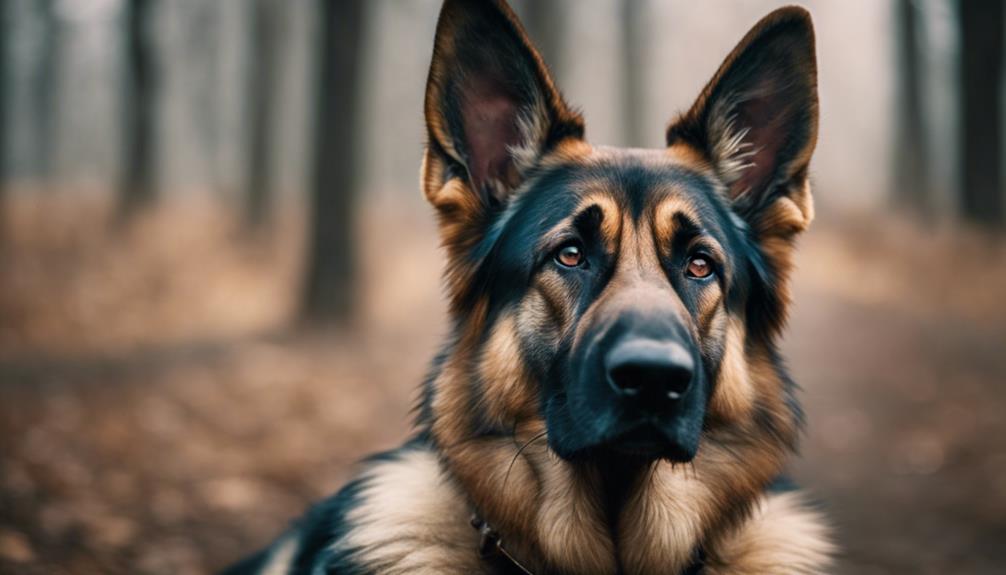
Czech German Shepherds boast a striking appearance characterized by their muscular build and pointed ears. Their short dense coat, often in black or tan, complements their robust physique. The facial features of Czech German Shepherds, including their long broad head and intelligent expression, contribute to their distinct and commanding presence.
Coat Color Variations
In Czech German Shepherds, the coat color variations, ranging from dark brown to black, are a distinctive feature influenced by genetics and specific breeding practices. Czech Shepherds may display a wide range of sable coats, with colors varying from dark hues to lighter shades not commonly seen in traditional German Shepherds. These coat patterns can include solid colors, bi-color combinations, or even striking tri-color arrangements. The sable coat, typical in Czech Shepherds, often incorporates tones of red, gold, silver, or gray alongside the dominant black, creating a visually appealing and unique appearance. The rich diversity in coat color variations is a testament to the intricate interplay between genetics and selective breeding practices within the Czech German Shepherd lineage.
Size and Build
The physical characteristics and appearance of Czech German Shepherds are defined by their medium to large size, muscular build, and distinctive features like a dense head and pointed ears, contributing to their robust and agile presence. With a muscular body and sturdy frame, these dogs showcase both strength and agility. Typically sporting a sable coat ranging from dark brown to black, Czech German Shepherds stand out with their athletic physique. Males can weigh up to 68 pounds, while females fall between 49 to 71 pounds. Their height varies from 24 to 26 inches, further emphasizing their solid build. This breed's combination of athleticism and sturdiness makes them well-suited for various tasks, from working roles to active companionship.
Facial Features
With strong jaws, pointed ears, and dense heads, the facial features of Czech German Shepherds exhibit a robust and distinctive appearance. These dogs have a muscular appearance and are known for their sable coats with diverse fur patterns. Czech German Shepherds experience rapid growth until about a year old, resembling their East German Shepherd counterparts due to shared bloodlines. Their pointed ears add to their alert and attentive expression, while their strong jaws contribute to their working abilities. The dense heads of Czech German Shepherds not only give them a powerful look but also house their sharp intellect and keen senses.
Temperament and Personality Traits
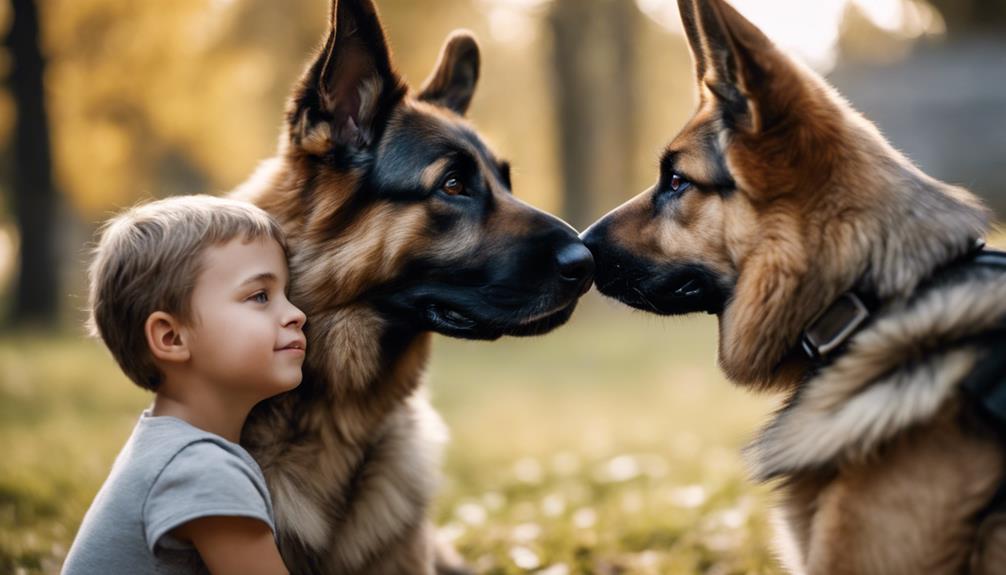
Amidst their loyalty, protectiveness, and intelligence, Czech German Shepherds exhibit a strong work ethic and eagerness to please their owners. This breed is not only known for its loyalty but also for its protective instincts, making them excellent watchdogs when properly raised. While they may be reserved around strangers, Czech German Shepherds are affectionate and deeply loyal to their families. Their intelligence and work ethic contribute to their versatility in various tasks, whether it be working roles, obedience trials, or simply being a loving companion.
To bring out the best in a Czech German Shepherd, proper socialization and training are vital. Due to their protective nature, early exposure to different people, environments, and animals is crucial. This helps them distinguish between friend and foe, reducing the likelihood of overprotective behaviors. Consistent training reinforces their obedience and channels their intelligence effectively. Positive reinforcement methods work well with this breed, as they are eager to please their owners.
Training and Exercise Needs
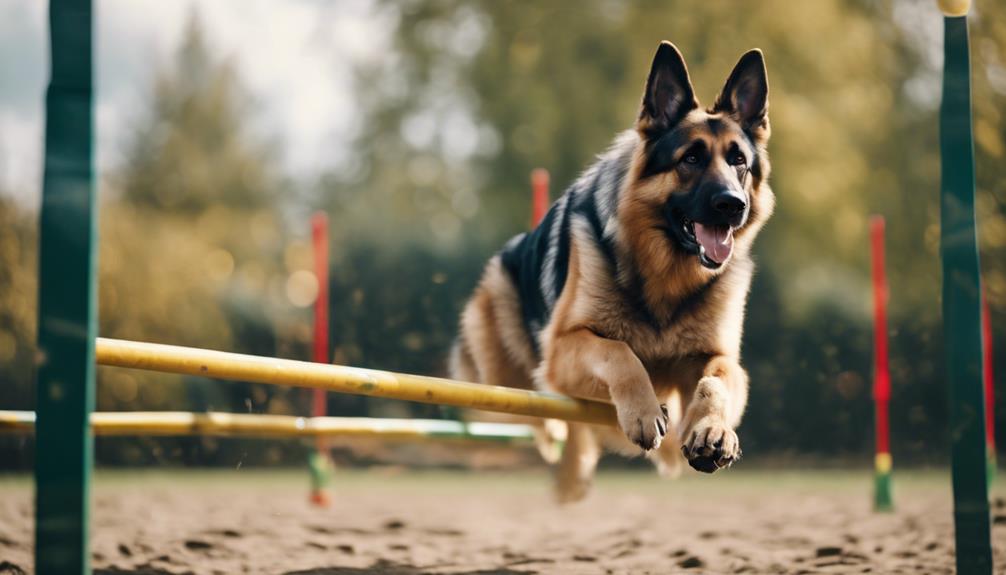
To properly train your Czech German Shepherd, it is essential to provide consistent guidance and positive reinforcement techniques to harness their intelligence and energy effectively. Engaging in obedience training sessions will help them develop good behavior and respond well to commands. Additionally, regular exercise routines, including activities like agility training and interactive play sessions, are crucial to ensure their physical health and mental well-being.
Training Essentials
Training Czech German Shepherds involves harnessing their intelligence and high energy levels through consistent exercise and positive reinforcement. To ensure successful training, consider the following essentials:
- Implement positive reinforcement techniques to motivate and reward good behavior.
- Provide ample exercise to cater to their working line heritage and high energy levels.
- Utilize the Schutzhund program, which can be highly effective for this breed.
- Maintain consistent training routines to prevent behavioral issues and keep their eagerness to learn intact.
Exercise Requirements
High exercise requirements are essential for Czech German Shepherds due to their working line heritage and the need for mental stimulation. Regular physical activities like long walks, runs, and interactive play sessions are crucial for their well-being. Training should encompass obedience, agility, and Schutzhund to keep them mentally engaged and physically fit. Failure to provide adequate exercise can result in behavioral issues such as restlessness, destructiveness, and excessive barking. Consistent daily exercise routines are key to preventing these problems and ensuring the overall happiness of Czech German Shepherds. By meeting their exercise needs and engaging them in various training activities, you can help your Czech German Shepherd lead a fulfilling and balanced life.
Common Health Concerns

Common health concerns in Czech German Shepherds encompass a range of conditions that can impact their well-being, including:
- Hip Dysplasia: A genetic condition affecting the hip joints.
- Elbow Dysplasia: This issue impacts the development and function of the elbow joint.
- Degenerative Myelopathy: A progressive spinal cord disease that can significantly affect mobility.
- Bloat: A potentially life-threatening condition where the stomach fills with gas or fluid.
Additionally, allergies can also affect Czech German Shepherds, leading to skin irritation, itching, and discomfort. It's essential to be aware of these common health concerns in this breed to ensure proactive monitoring and care for your furry companion. Regular veterinary check-ups, maintaining a healthy weight, providing adequate exercise, and a balanced diet are crucial in managing these health issues. Early detection and intervention can help alleviate symptoms and improve the quality of life for your Czech German Shepherd. Remember, being proactive and observant can make a significant difference in addressing these health concerns promptly.
Benefits of Owning a Czech German Shepherd
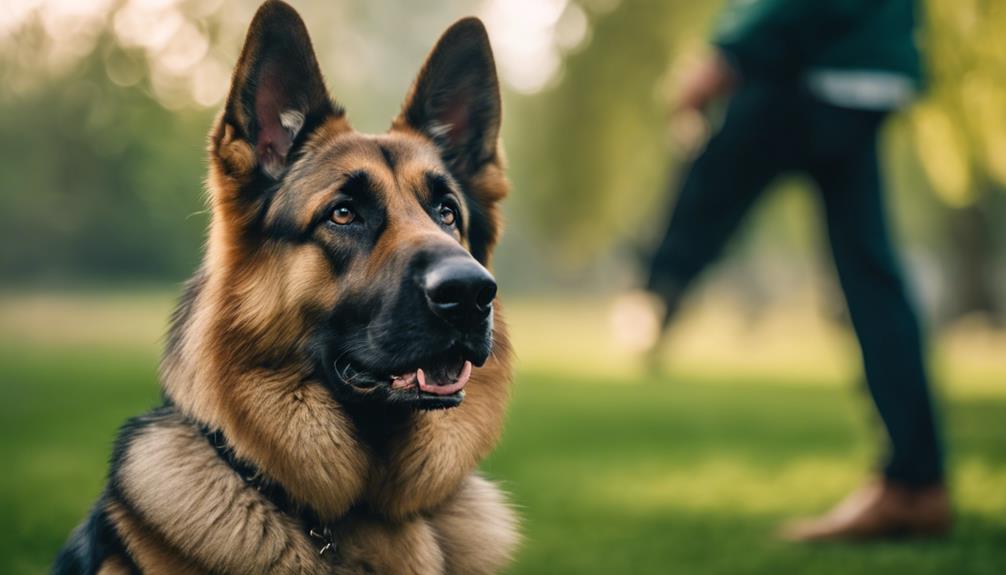
Owning a Czech German Shepherd brings a unique blend of intelligence, loyalty, and versatility to your household, making them exceptional companions for families seeking a devoted and capable canine partner. Their loyalty and protective instincts are unmatched, making them great family dogs that form strong bonds with all family members and provide a sense of security. Czech German Shepherds excel in various roles, such as police work, search and rescue, and as therapy dogs, showcasing their versatility and adaptability.
Proper socialization and training are key with Czech German Shepherds. With the right guidance, they can peacefully coexist with other pets, making them a good choice for multi-pet households. Due to their high energy levels, these dogs require regular exercise, making them a perfect fit for active families who enjoy outdoor activities. Engaging in physical activities with your Czech German Shepherd not only keeps them physically fit but also helps stimulate their sharp minds.
Czech Vs. Regular German Shepherds Comparison
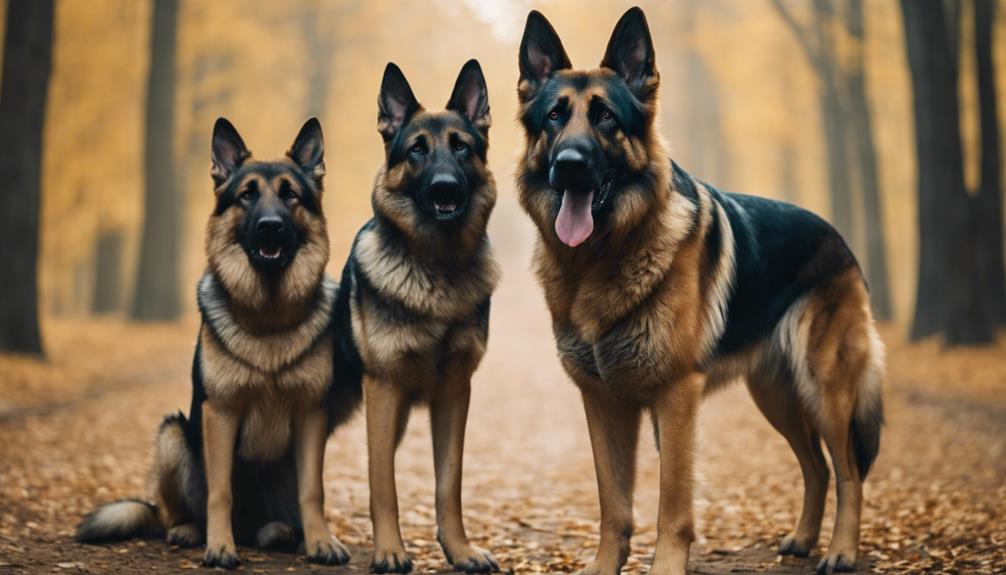
When comparing Czech German Shepherds to regular German Shepherds, it is evident that their genetic lineage and physical attributes play a significant role in distinguishing these two breeds.
- Genetic Lineage: Czech German Shepherds have a lineage closely tied to East German Shepherds, while regular German Shepherds originated in Germany.
- Size: Czech German Shepherds are typically heavier, larger, and more muscular compared to regular German Shepherds.
- Temperament: Both Czech and regular German Shepherds share similar temperaments characterized by intelligence, loyalty, and protectiveness.
- Distinct Breeds: While both breeds exhibit loyalty and make excellent working dogs, Czech German Shepherds and regular German Shepherds are considered distinct breeds with unique characteristics.
Frequently Asked Questions
What Are the Characteristics of a Czech German Shepherd?
When it comes to Czech German Shepherds, their unique temperament, distinct appearance, working abilities, trainability levels, health considerations, exercise requirements, socialization needs, and coat maintenance are all factors to consider when choosing this loyal and versatile breed.
Are Czech German Shepherds Rare?
Czech German Shepherds are not rare but less common. Their increasing demand is due to exceptional traits. Find them through reputable breeders or adoption centers. They offer intelligence, loyalty, and versatility, appealing to various roles.
How Do I Know What Breed My German Shepherd Is?
To identify your German Shepherd's breed, observe coat colors, ear shapes, tail lengths, temperament traits, size variations, facial expressions, exercise needs, and training abilities. Consult with experts for confirmation. Carefully consider these factors for accuracy.
What Is Good About Bohemian Shepherd?
You'll appreciate the Bohemian Shepherd for being a loyal companion with protective instincts. Their intelligence makes them excellent workers, perfect for active lifestyles. With proper obedience training and socialization, they're ideal family-friendly pets, known for their playful demeanor.
Conclusion
In conclusion, Czech German Shepherds are a remarkable breed with a rich history and exceptional qualities. Their intelligence, loyalty, and protective nature make them ideal companions for families and individuals seeking a devoted and trainable pet. By understanding their history, physical characteristics, temperament, and training needs, you can ensure a fulfilling and rewarding relationship with your Czech German Shepherd. Consider adding one of these remarkable dogs to your family and experience the joys they bring.
